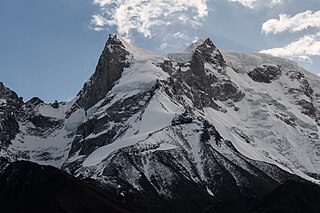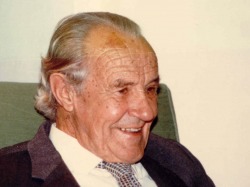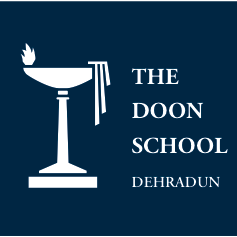
Harish Kapadia is a Himalayan mountaineer, author and long-time editor of the Himalayan Journal from India.

Francis Sydney Smythe, better known as Frank Smythe or F. S. Smythe, was an English mountaineer, author, photographer and botanist. He is best remembered for his mountaineering in the Alps as well as in the Himalayas, where he identified a region that he named the "Valley of Flowers", now a protected park. His ascents include two new routes on the Brenva Face of Mont Blanc, Kamet, and attempts on Kangchenjunga and Mount Everest in the 1930s. It was said that he had a tendency for irascibility, something some of his mountaineering contemporaries said "decreased with altitude".

Major Hari Pal Singh Ahluwalia was an Indian mountaineer, author, social worker and Indian Ordnance Factories Service (IOFS) officer. During his career he made contributions in the fields of adventure, sports, environment, disability and social work. He is one of six Indian men and the twenty first man in the world to climb Mount Everest. On 29 May 1965, 12 years to the day from the first ascent of Mount Everest, he made the summit with the fourth and final successful attempt of the 1965 Indian Everest Expedition along with H. C. S. Rawat and Phu Dorjee Sherpa. This was the first time three climbers stood on the summit together.

Captain Mohan Singh Kohli, is an Indian Navy officer and mountaineer, who led the 1965 Indian Everest Expedition, which saw nine men reach the summit of Everest, a world record for 17 years.

Trisul is a group of three Himalayan mountain peaks of western Kumaun, Uttarakhand, with the highest reaching 7120m. The three peaks resemble a trident - in Sanskrit, Trishula, trident, is the weapon of Shiva. The Trishul group forms the southwest corner of the ring of peaks enclosing the Nanda Devi Sanctuary, about 15 kilometres (9 mi) west-southwest of Nanda Devi itself. The main peak, Trisul I, was the first peak over 7,000 m (22,970 ft) to have ever been climbed, in 1907.

Swargarohini is a mountain massif in the Saraswati (Bandarpunch) Range of the Garhwal Himalaya. It lies in the Uttarkashi District of the northern Indian state of Uttarakhand, west of the Gangotri group of peaks. It comprises four separate peaks, the main peak Swargarohini I is the subject of this article.

Narendra Dhar Jayal (Nandu Jayal) (25 June 1927 – 28 April 1958) was an Indian mountaineer and an officer of the Bengal Sappers and the Indian Army Corps of Engineers. He is credited with pioneering and patronizing early post-Independence mountaineering in India, and was the founder principal of the Himalayan Mountaineering Institute. He encouraged the youth of India to take up mountaineering, and has been called the "Marco Polo of Indian Mountaineering".

Bandarpunch is a mountain massif in the Garhwal Himalaya in Uttarakhand, India. The massif has 3 peaks: White Peak, also called Banderpunch II, to the west above Yamunotri; almost 5 km east is Bandarpunch main peak or Banderpunch I ; and about 4 km to the north-east is Kalanag.

Kalanag or Black Peak (6,387 m) is a peak in the Garhwal Himalaya in Uttarakhand, India. It is the highest peak in the Bandarpunch massif, others being Bandarpunch I (6,316 m) and White Peak or Bandarpunch II (6,102 m). The name literally means "Black Cobra" in Hindi.

John A. K. Martyn OBE (1903–1984), was an English schoolmaster, scholar, academic and a distinguished British Himalayan mountaineer. He was the second headmaster of The Doon School.

Gurdial Singh was an Indian schoolteacher and mountaineer who led the first mountaineering expedition of independent India to Trisul in 1951. In 1958, he led the team that made the first ascent of Mrigthuni . In 1965, he was a member of the first successful Indian expedition team to climb Mount Everest.

Romilly Lisle Holdsworth, commonly known as R. L. Holdsworth, was an English scholar, academic, educationalist, cricketer and a distinguished Himalayan mountaineer. He was a member of the first expedition to Kamet in 1931, which included other stalwarts such as Eric Shipton and Frank Smythe. Holdsworth, along with Shipton and Smythe, are credited with the discovery of the Valley of Flowers, now a UNESCO World Heritage Site, during their return from Kamet.

John Travers Mends Gibson was an English schoolmaster, scholar, academic and a distinguished British Himalayan mountaineer.

Nanda Devi East, locally known as Sunanda Devi, is the lower of the two adjacent peaks of the highest mountain in Uttarakhand and second highest mountain in India; Nanda Devi is its higher twin peak. Nanda Devi and Nanda Devi East are part of the Garhwal Himalaya, and are located in the state of Uttarakhand. The two peaks are visible from almost everywhere in Kumaon. The first ascent of Nanda Devi East peak was probably in 1939 by Jakub Bujak and Janusz Klarner. The elevation of Nanda Devi East is 7,434 m (24,390 ft) and its prominence is 260 m (850 ft).

Mountaineering is quite popular in India, since the entire northern and north-eastern borders are the Himalayas, the highest mountain range in the world. The apex body in India is the Indian Mountaineering Foundation, which is affiliated to the International Federation of Sport Climbing.

Indian Mountaineering Foundation is an apex national body which organize and support, mountaineering and rock climbing expeditions at high altitudes in the Himalayas. The organization also promotes and encourages schemes for related adventure activities and environment-protection work in the Indian Himalayas. IMF has organized many expeditions to the high peaks in the Himalayas including Mount Everest.

Hari Dang (1935-2016) was an Indian educationist and a mountaineer. While at The Doon School, he led the schoolboys on the first Indian expedition to Mt. Jaonli in 1965.

Devtoli is a mountain of Kumaon Himalaya located in the Bageshwar district of Uttarakhand, India. It stands at 6,788 metres (22,270 ft). It is 36th highest located entirely within Uttarakhand. Nanda Devi is the highest mountain in this category. It is located at the southern rim of Nanda Devi Sanctuary. Devtoli is located just north west of Maiktoli and east of Mrigthuni. On the north east side lies Nanda Devi and Panwali Dwar on the east side. Tharkot on the southern side.
Savita Kanswal was an Indian mountaineer hailing from Uttarakhand. She is the first Indian woman to conquer both Mount Everest and Makalu within 16 days. She died in an avalanche accident on October 4, 2022. In January 2024, she posthumously received the Tenzing Norgay National Adventure Award, the highest honor in adventure sports in India.



















